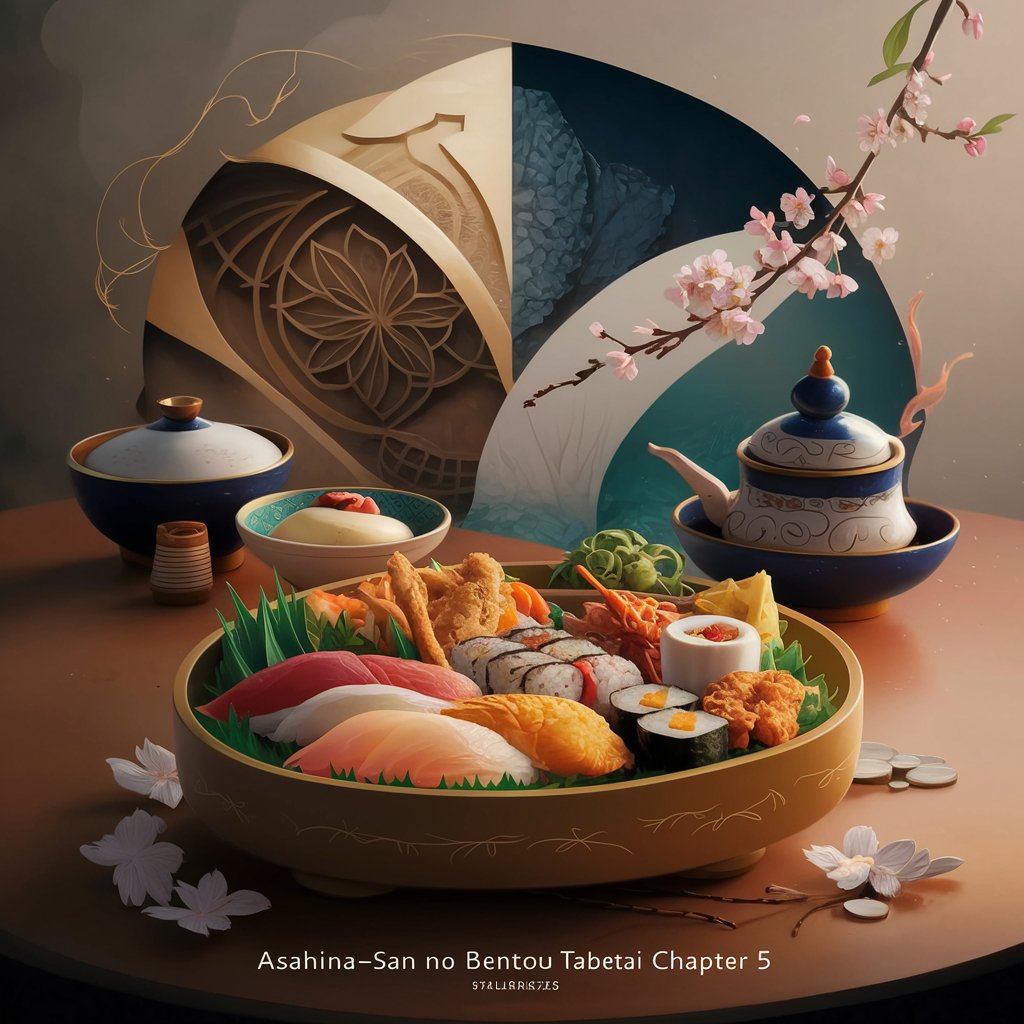Asahina-san no Bentou Tabetai Chapter 5: A Deep Dive into Bento Culture and Emotional Connections
Introduction
In the charming world of manga, “Asahina-san no Bentou Tabetai” offers a delightful exploration of Japanese culinary culture through its engaging storylines and vivid illustrations. Chapter 5 of this series continues to captivate readers with its depiction of bento creations and the emotional significance behind them. This article provides an in-depth analysis of Chapter 5, exploring its themes, cultural context, and impact on readers.
This chapter highlights a new bento creation while exploring the emotional and cultural significance of meals in Japanese life.
Table of Contents
- Overview of “Asahina-san no Bentou Tabetai”
- Chapter 5: Summary and Key Elements
- Plot Summary
- Key Characters
- Major Themes
- The Cultural Significance of Bento
- Historical Background
- Modern-Day Relevance
- Emotional Depth in Chapter 5
- Character Development
- Emotional Resonance
- Illustrative Techniques and Artistry
- Artistic Style
- Visual Storytelling
- Comparative Analysis with Other Manga
- Similar Themes in Manga
- Unique Aspects of “Asahina-san no Bentou Tabetai”
- Reader Reactions and Impact
- Popularity and Reception
- Fan Feedback and Discussions
- FAQs About Chapter 5
- Conclusion
Overview of “Asahina-san no Bentou Tabetai”
What is “Asahina-san no Bentou Tabetai”?
“Asahina-san no Bentou Tabetai” is a popular manga series that delves into the world of Japanese cuisine, focusing on the art of bento making. The series combines elements of culinary arts with personal stories, offering readers a unique glimpse into Japanese food culture through its protagonist, Asahina-san.
Key Features of the Series
- Culinary Focus: The series highlights various aspects of bento preparation, from traditional recipes to creative variations.
- Character-Driven Stories: The narrative explores the lives and emotions of its characters, using food as a central theme.
- Cultural Insight: The manga provides an authentic look into Japanese culinary traditions and their significance in daily life.
Chapter 5: Summary and Key Elements
Plot Summary
Chapter 5 of “Asahina-san no Bentou Tabetai” introduces readers to a new bento creation by Asahina-san. This chapter not only showcases the preparation of a visually stunning and delicious bento but also delves into the personal and cultural meanings associated with the meal. The story focuses on a special occasion or event that underscores the importance of food in expressing care and connection.
Key Characters
- Asahina-san: The protagonist, known for her talent in creating exquisite bentos. In this chapter, her character continues to evolve as she navigates personal and culinary challenges.
- Supporting Characters: Friends, family, or colleagues who play a role in the story, providing context and interaction that enrich the narrative.
Major Themes
- Culinary Artistry: The chapter emphasizes the creativity and skill involved in bento making, highlighting how food can be both an art form and a means of communication.
- Emotional Connections: The significance of meals in strengthening relationships and expressing emotions is a central theme, reflecting how food can convey love and care.
The Cultural Significance of Bento
Historical Background
Bento, a traditional Japanese meal served in a single container, has a rich history dating back to ancient Japan. Originally a simple and practical way to carry meals, bento has evolved into an art form, with intricate designs and varied ingredients reflecting the creator’s skills and intentions.
Modern-Day Relevance
In contemporary Japan, bento remains a popular choice for meals, symbolizing convenience and care. It is commonly seen in various settings, from school lunches to elaborate creations for special occasions. The modern bento culture reflects both practicality and creativity, merging traditional values with contemporary lifestyles.
Emotional Depth in Chapter 5
Character Development
Chapter 5 offers significant insight into Asahina-san’s character, revealing her motivations and personal connections through her bento creations. The chapter explores how her culinary skills are intertwined with her emotional state and relationships with others.
Emotional Resonance
The emotional impact of the chapter is profound, as it demonstrates how food can serve as a medium for expressing deep feelings. The story highlights moments of joy, reflection, and connection, showing how bento serves as more than just a meal but a vessel for personal expression.
Illustrative Techniques and Artistry
Artistic Style
The manga’s artistic style plays a crucial role in conveying the beauty and intricacy of bento creations. Detailed illustrations of food items and the vibrant use of color enhance the reader’s appreciation of both the culinary artistry and the narrative.
Visual Storytelling
The visual storytelling in Chapter 5 captures the essence of bento making through dynamic and expressive artwork. The integration of visual elements with the story adds depth and engagement, allowing readers to experience the characters’ emotions and the significance of the meals.
Comparative Analysis with Other Manga
Similar Themes in Manga
Many manga series explore culinary themes, but “Asahina-san no Bentou Tabetai” distinguishes itself through its focus on bento culture and its combination of personal and cultural narratives. Comparing it with other food-themed manga can provide insights into how different series handle similar themes.
Unique Aspects of “Asahina-san no Bentou Tabetai”
What sets “Asahina-san no Bentou Tabetai” apart is its detailed portrayal of bento artistry and its emphasis on the emotional connections associated with food. The series combines practical culinary knowledge with heartfelt storytelling, offering a unique reading experience.
Reader Reactions and Impact
Popularity and Reception
Chapter 5 has been well-received by fans, who appreciate its detailed depiction of bento culture and its emotional depth. The chapter’s success is reflected in positive reviews and discussions within the manga community.
Fan Feedback and Discussions
Readers have shared their thoughts and interpretations of Chapter 5, highlighting its impact on their understanding of bento culture and its emotional significance. Fan feedback often includes personal reflections on how the chapter resonated with their own experiences.
FAQs About Chapter 5
Q: What new bento creation is featured in Chapter 5?
A: Chapter 5 introduces a unique bento creation by Asahina-san, showcasing her culinary skills and creativity. The bento reflects both aesthetic appeal and emotional significance.
Q: How does Chapter 5 explore the cultural significance of bento?
A: The chapter delves into the historical and modern-day relevance of bento, highlighting how it represents both practicality and artistic expression in Japanese culture.
Q: What are the key emotional themes in Chapter 5?
A: Key emotional themes include the personal connections and feelings conveyed through bento making, illustrating how food can be a means of expressing care and building relationships.
Q: How does the artwork enhance the story in Chapter 5?
A: The detailed illustrations and vibrant colors in Chapter 5 enhance the depiction of bento creations and contribute to the emotional impact of the story.
Q: What makes “Asahina-san no Bentou Tabetai” different from other food-themed manga?
A: The series stands out for its focus on bento culture, its blend of practical culinary knowledge with heartfelt storytelling, and its exploration of emotional connections through food.
Conclusion
Chapter 5 of “Asahina-san no Bentou Tabetai” provides a rich and engaging exploration of bento culture and its emotional significance. Through its detailed illustrations, heartfelt storytelling, and cultural insights, the chapter continues to captivate readers and contribute to the series’ success. By blending culinary artistry with personal narratives, “Asahina-san no Bentou Tabetai” offers a unique and meaningful reading experience that resonates with fans and highlights the importance of food in Japanese culture.






